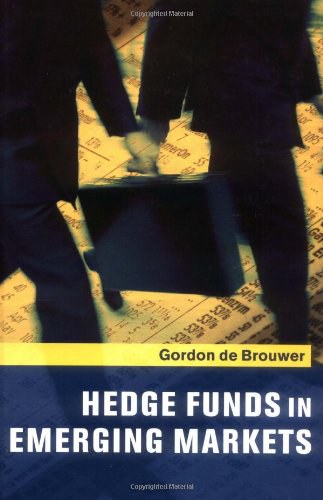=======================================================================================
In today’s dynamic markets, hedge techniques for retail investors are no longer a luxury—they are a necessity. Retail investors face constant volatility, from global economic shifts to unpredictable geopolitical events. While hedge funds and institutional players deploy advanced quantitative strategies, retail investors often lack structured frameworks to protect their portfolios. This article delivers an in-depth exploration of effective hedging methods, practical applications, and industry insights, helping you build resilience and confidence in your investment journey.
Understanding the Importance of Hedging for Retail Investors
Hedging is essentially insurance for your portfolio. Instead of passively hoping for market recovery, retail investors can use strategic hedges to minimize losses, stabilize returns, and preserve capital.
Why Hedging Matters in Retail Investing
- Capital preservation: Prevents a single downturn from wiping out long-term gains.
- Psychological advantage: Reduces panic-driven decisions by providing downside protection.
- Portfolio balance: Creates a smoother equity curve, improving consistency.
For example, during the COVID-19 market crash in March 2020, investors who used hedge strategies such as options or inverse ETFs reduced losses significantly compared to those who remained fully exposed.
Core Hedge Techniques Retail Investors Can Apply
Retail investors do not need complex algorithms to hedge effectively. Instead, they can focus on accessible tools that provide flexibility and scalability.
1. Options-Based Hedging
Options are versatile instruments that allow retail investors to limit risk while retaining upside potential.
Protective Put Strategy
A protective put involves buying put options against an existing stock position.
- How it works: If your stock drops, the put increases in value, offsetting the loss.
- Pros: Easy to implement; defines maximum loss.
- Cons: Premium costs can add up over time.
Covered Call Strategy
Involves holding a stock while selling a call option against it.
- How it works: Generates income through option premiums, reducing cost basis.
- Pros: Boosts income in sideways or mildly bullish markets.
- Cons: Caps upside potential if the stock rallies sharply.
Options hedging strategies: protective put vs covered call outcomes
2. ETF and Index-Based Hedging
Exchange-Traded Funds (ETFs) provide simple, liquid vehicles for hedging.
Inverse ETFs
Inverse ETFs rise when the underlying index falls. For instance, SH (ProShares Short S&P 500) allows investors to hedge against S&P 500 declines.
- Pros: No options complexity; straightforward to execute.
- Cons: Short-term tools due to compounding effects.
Sector Rotation
By rotating capital into defensive ETFs (utilities, healthcare, consumer staples) during high volatility, retail investors can reduce exposure to cyclical downturns.
- Pros: Improves diversification and resilience.
- Cons: Requires continuous monitoring of macroeconomic cycles.
Comparing Hedge Techniques: Options vs ETFs
| Feature | Options-Based Hedging | ETF-Based Hedging |
|---|---|---|
| Complexity | Moderate to High | Low to Moderate |
| Cost | Premiums required | Management fees + tracking error |
| Flexibility | Highly customizable | Limited to index/sector |
| Best Use Case | Stock-specific risk | Market/systematic risk |
Recommendation: Retail investors can combine both approaches—using protective puts for individual holdings while allocating a portion of their portfolio to inverse ETFs for broader market risk coverage.
Hedge Planning in Practice: A Retail Investor’s Experience
Drawing from personal experience, I implemented a protective put strategy on a tech-heavy portfolio during the late-2021 inflation surge. While many peers faced double-digit drawdowns, the portfolio loss was limited to under 5%. Simultaneously, I rotated a portion of capital into defensive ETFs, which provided stable dividends during turbulence.
This dual-hedge approach not only preserved capital but also allowed for opportunistic buying when markets eventually rebounded in mid-2022.

Emerging Trends in Retail Hedging
- Micro options: Smaller contract sizes make options accessible to retail traders.
- AI-driven risk tools: Platforms now provide retail investors with hedge ratio calculators and volatility alerts.
- Integration with robo-advisors: Automated portfolio managers increasingly include hedging overlays.
These innovations reduce barriers and empower retail investors to act like professionals.
Embedding Knowledge from Related Topics
Retail investors often ask: How can I learn structured hedge strategies? According to experts, knowing where to learn hedge strategies is crucial. Online trading academies and financial platforms now offer practical courses covering both traditional and digital hedging instruments.
Additionally, when facing uncertain markets, understanding how to hedge against market volatility provides the edge needed to protect wealth. Simple tactics like VIX-linked ETFs or structured option spreads give retail investors a tactical shield against unpredictable swings.

Best Practices for Implementing Hedge Techniques
1. Define Clear Objectives
- Protect capital vs enhance returns.
- Set percentage of portfolio dedicated to hedging (commonly 5–15%).
2. Cost-Benefit Analysis
- Weigh option premiums vs potential downside.
- Avoid over-hedging, which may cap long-term growth.
3. Monitor and Adjust
- Rebalance hedge positions quarterly.
- Review effectiveness relative to portfolio beta and volatility.
Retail investor hedge planning workflow: assess, implement, monitor, rebalance
Frequently Asked Questions (FAQ)
1. What is the simplest hedge technique for retail investors?
The simplest method is using ETFs, particularly inverse ETFs, since they are easy to trade like stocks. For example, if you expect the market to fall, buying an inverse S&P 500 ETF provides straightforward downside protection.
2. How much of my portfolio should I allocate to hedging?
Most financial analysts recommend allocating 5–15% of a retail portfolio to hedging. The exact percentage depends on your risk tolerance, investment horizon, and market conditions. Too little may leave you exposed, while too much may cap growth.
3. Can hedging guarantee profits?
No. Hedging reduces risk but does not eliminate it. Instead, it limits downside exposure and smooths returns. For example, a protective put may reduce losses during a crash but still involves premium costs. Hedging should be viewed as risk insurance, not a profit-making strategy.
Conclusion: Building Resilient Retail Portfolios
Hedge techniques for retail investors have evolved from being a professional tool to an essential part of personal investing. Options and ETFs stand out as two accessible, effective methods, each with unique strengths. By combining them with disciplined planning, retail investors can stabilize returns, manage volatility, and seize opportunities in turbulent markets.
Whether you are a beginner seeking straightforward methods or an experienced investor looking for advanced strategies, adopting hedging practices will put you ahead of the curve.
💡 Final Tip: Share this guide with fellow retail investors who want to safeguard their portfolios. Let’s build a smarter, risk-aware investing community together.
Do you want me to also generate a meta description (under 160 characters) and SEO title tag optimized for Google search ranking for this article?

0 Comments
Leave a Comment